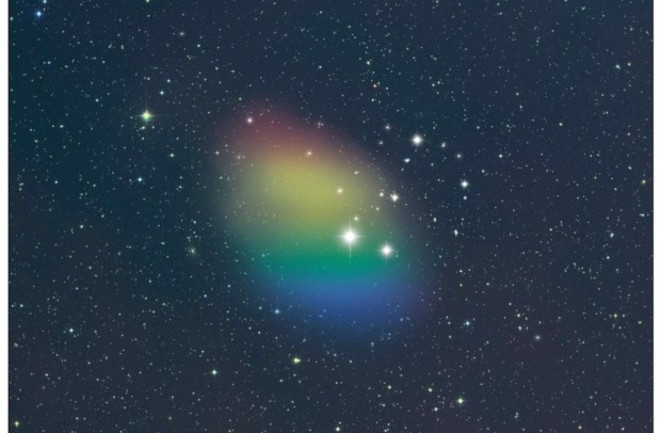A massive gas cloud, as large as a spiral galaxy, hides in plain sight.
Key Takeaways
- Astronomers may have discovered a dark, primordial galaxy without any star formation.
- The galaxy, J0613+52, is an undisturbed cold hydrogen mass, 270 million light-years away.
- A coordinate error led to its accidental discovery using the Green Bank Telescope (GBT).
- The gas cloud contains billions of solar masses and rotates like the Milky Way.
- Confirming its primordial nature may require further optical observations to detect “nothing.”
____________
A Rare Discovery of a Starless Galaxy
Astronomers may have stumbled upon a primordial galaxy, J0613+52, an undisturbed mass of cold hydrogen gas that has yet to form stars. Located approximately 270 million light-years away, this unique galaxy consists of billions of solar masses of hydrogen gas rotating at speeds comparable to the Milky Way. Its discovery offers scientists a glimpse into an early stage of galaxy evolution, a phenomenon that has eluded researchers for decades.
The unexpected finding occurred during a survey using the Green Bank Telescope (GBT) in West Virginia and the Nançay Radio Telescope in France. Initially, researchers noticed a discrepancy between the two telescopes’ data. Upon investigating, the team realized that the coordinates in the GBT catalog were mistyped, leading them to detect a mysterious spiral-galaxy-sized gas cloud in radio wavelengths. However, follow-up observations in visible light revealed no corresponding star-forming galaxy.

Why This Galaxy Stands Out
The lack of visible stars suggests J0613+52 could be a primordial galaxy—a cloud of gas too diffuse for gravity to condense it into stars. Additionally, the galaxy appears isolated from other galaxies, avoiding disturbances that might have triggered star formation. According to Karen O’Neil, the study leader and astronomer at the Green Bank Observatory, such primordial galaxies are likely rare. Past neutral hydrogen surveys, such as those conducted by the Arecibo Observatory, failed to identify similar objects.
O’Neil and her team aim to confirm the galaxy’s primordial nature by using a large optical telescope for extended observations. Ironically, the confirmation of its starless state hinges on the inability to detect any significant optical signal. O’Neil expressed excitement about the potential findings, noting that even a faint detection would provide groundbreaking insights into galactic evolution, while a complete lack of detection would be equally intriguing.

This discovery highlights the value of advanced radio astronomy techniques and the importance of serendipity in scientific breakthroughs. As astronomers delve deeper into the universe, objects like J0613+52 might help unravel the mysteries of galaxy formation in the early universe.



